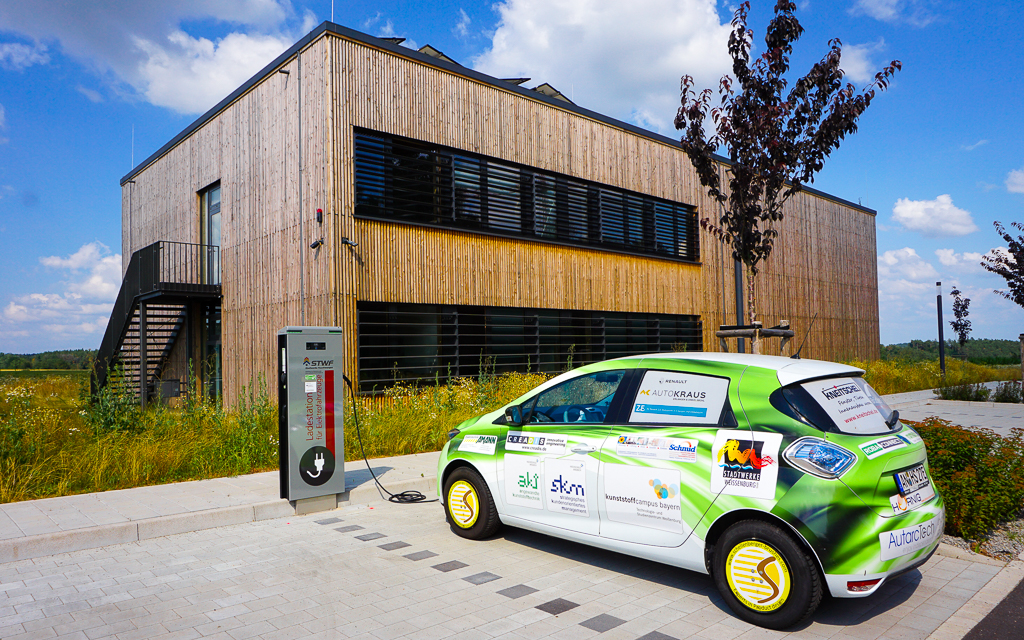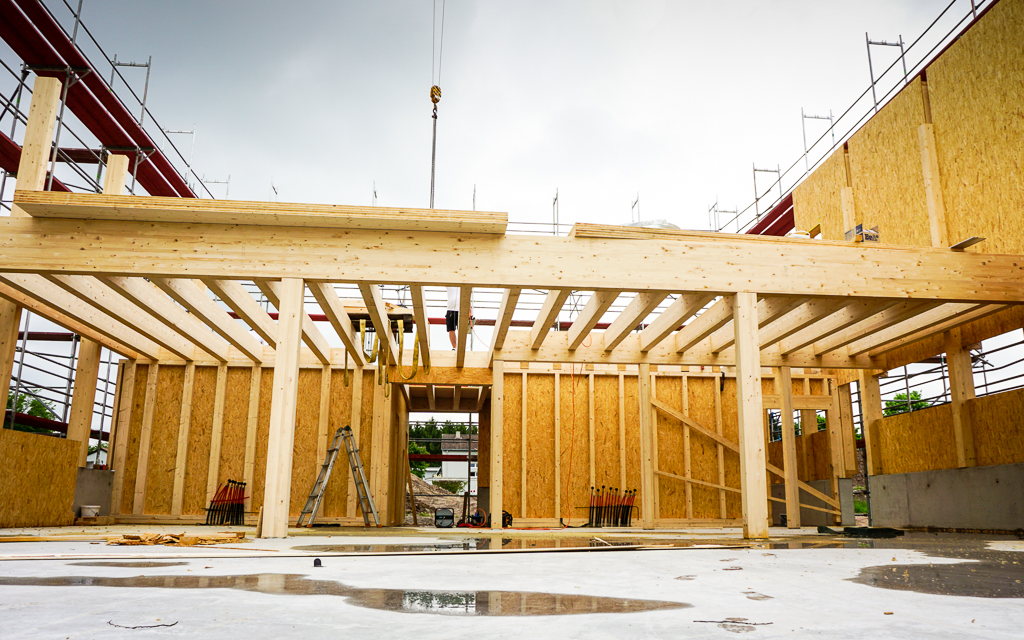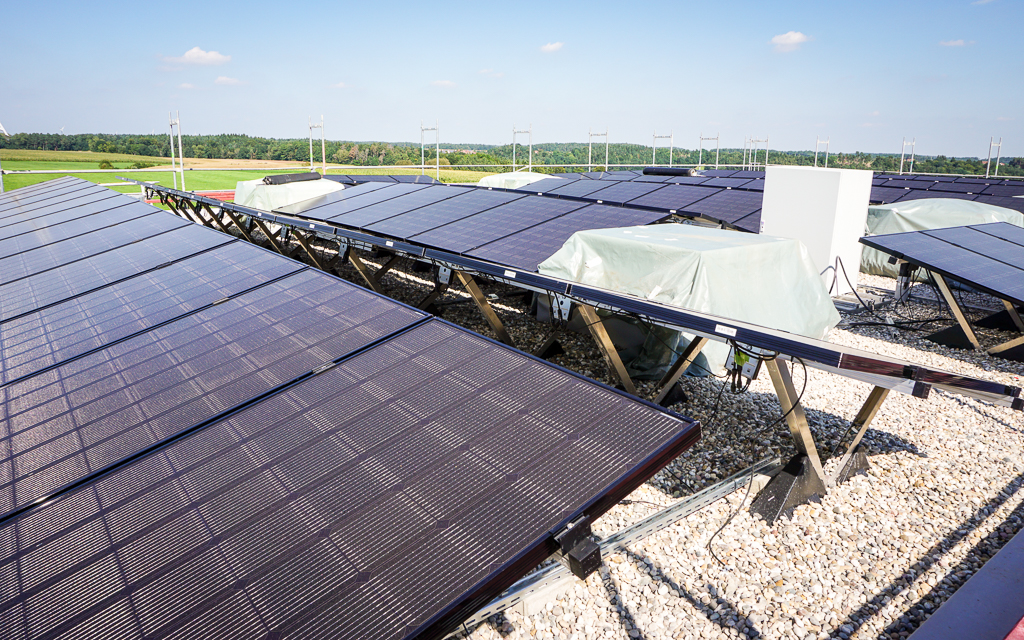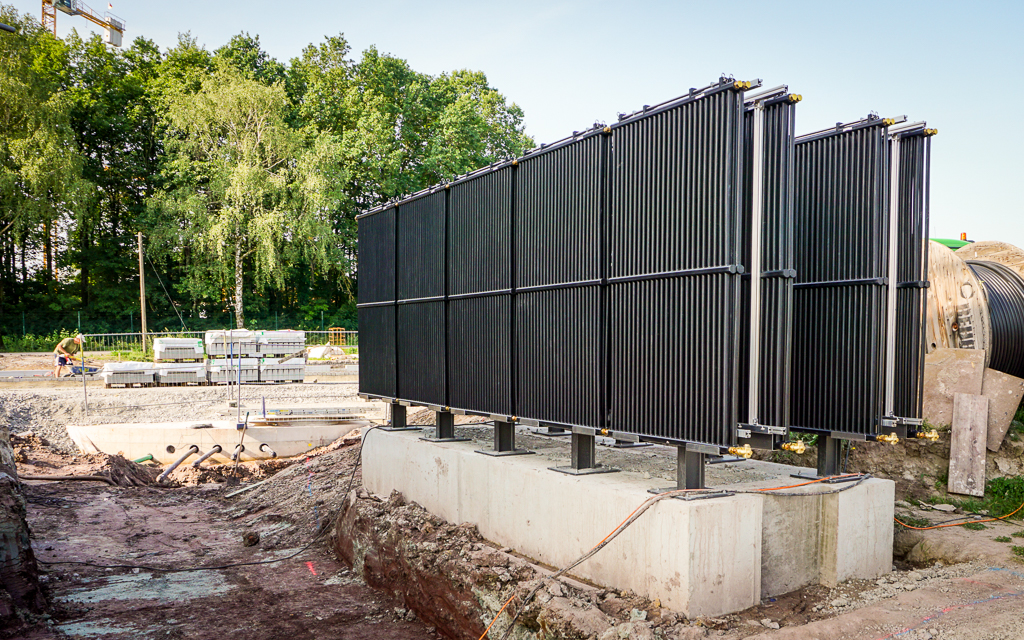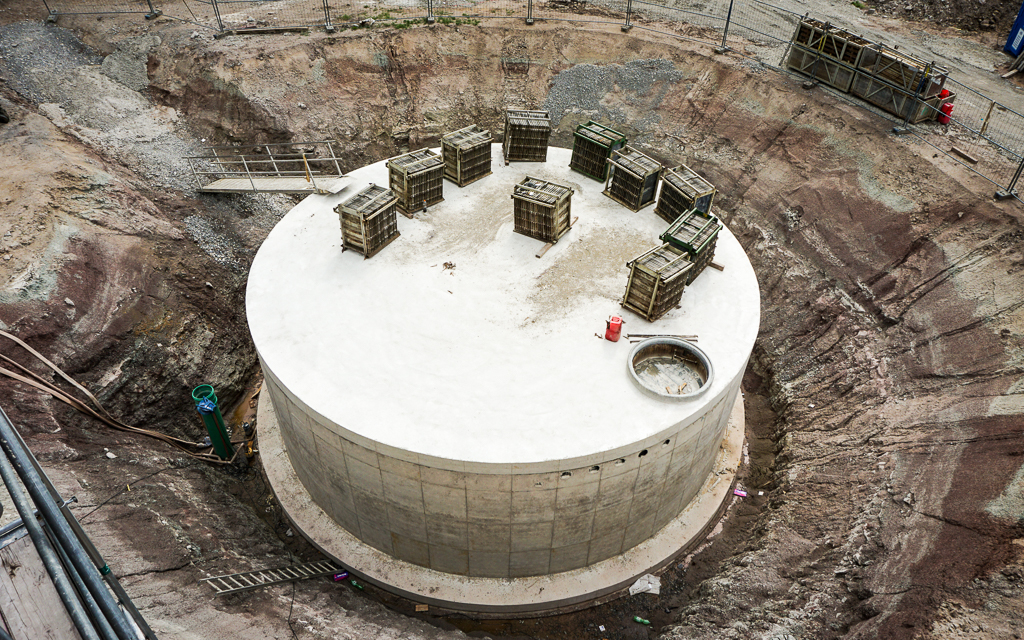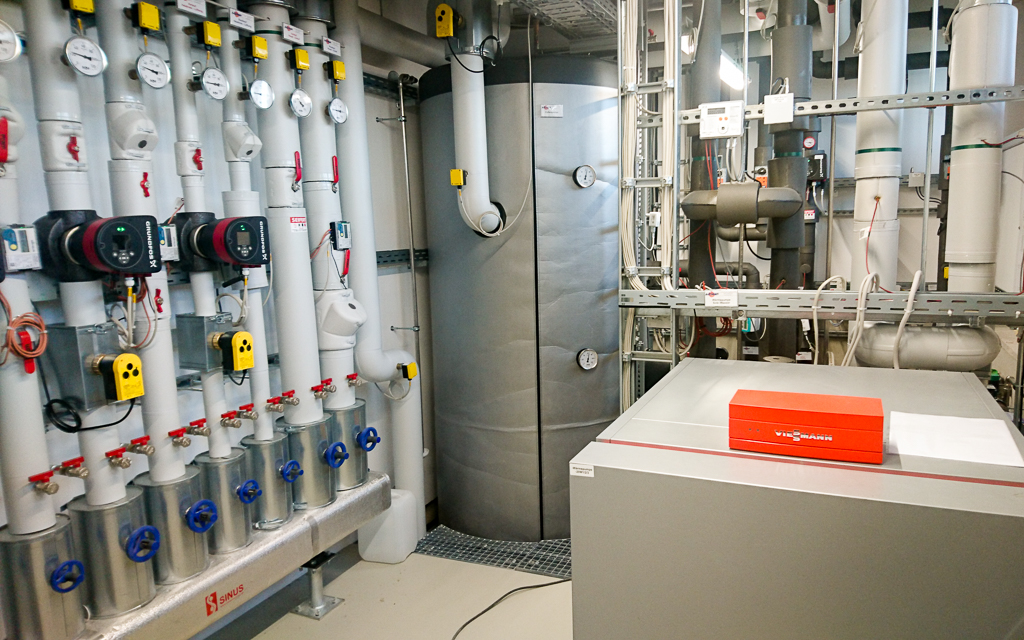Research Hall
Three years ago the innovative and environmentally-friendly research hall was built on Campus Feuchtwangen. Since then, the research hall has been standing for successful junction of construction and climate protection at the same time. It is a trend setting pilot project of the Förderprogramm für Energieeffizienzhaus Plus-Bildungsbauten, the German support programme for plus-energy educational buildings. With its high-tech facilities and sustainable power supply the research hall has become an excellent centre for studying and technology.
Worldwide, the energy demand of buildings accounts for a significant proportion of the total energy demand. By converting educational buildings into plus-energy constructions, many buildings in Germany that are already in need of renovation can be upgraded to energy-efficiency houses, thus saving a large proportion of energy. Launched in 2015 by the Federal Ministry for Home Affairs and Building (BMI) and the Federal Institute for Research on Building, Urban Affairs and Spatial Development (BBSR), the nationwide funding program for plus-energy educational buildings also supports the Campus Feuchtwangen.
Plus-Energy Buildung
The overall balance of energy within the building is positive. That means, that the solar power system generates more energy than is needed for power supply and heating of the building itself. Excess energy can be used directly for charging the university’s own electric car.
The building is equipped with sensors and actuators as well as bus-systems and building control technology which allows for adjusting settings and reading out of counters and meters. All the data is stored in a database. The historical data can thus be used at any time for balances and comparisons in order to serve for a more efficient use of the energies in the building.
Built from Wood
The research hall is constructed of a load-bearing skeleton made of glued wood trusses on a concrete base. The spaces in between are filled with wooden frame elements which also serve to stiffen the building. Compared to buildings made of reinforced concrete or masonry, buildings made of wood make an active contribution to climate protection. The “grey energy” is far lower and the carbon dioxide that the tree took from the air as it grew is bound permanent. The rear-ventilated wooden facade consists of untreated local Douglas fir wood. Besides the appearance, it also serves to avoid direct sunlight on the outer wall and also to reduce heat loss from wind.
Photovoltaics
Almost the entire roof area is covered with photovoltaics. The different orientation of the panels ensures that electrical energy can be generated over the entire course of the whole day. The electrical energy obtained is primarily used to operate the offices and seminar rooms as well as the building technology. The excess electrical energy is fed into the local power grid. The yield from photovoltaics makes a significant contribution to the positive overall energy balance of the research hall.
Energy Fence
The energy fence is a solar air absorber made of plastic pipes and collects heat both from the ambient air and from solar radiation. The size and orientation are chosen so that outside air and solar energy can be used as efficiently as possible. The energy collected from the environment can be used directly as a source for the heat pump or fed to the ice storage for regeneration. If the energy fence does not provide enough energy, the heat pump draws the required energy from the water in the ice storage.
Ice Storage
The ice storage consists of a large water tank. The construction is similar that of a large cistern, which is traversed by spiral-shaped plastic pipes that serve as heat exchangers. The ice storage serves as an energy source for the heat pump. It absorbs heat both from the earth and from the air and sun via the energy fence. In winter, the phase transition from water to ice is used to generate heat: during crystallization, the same amount of energy is released that is necessary to heat water from 0° C to 80° C. Regeneration with the help of the energy fence means that the freezing process can be repeated several times. And in summer, the ice ensures passive cooling of the building.
Intelligent Heating
The intelligent control of the building technology systems decides, taking into account the weather data, forecasts and season as well as user behaviour, how the heat is best obtained from the available sources and efficiently distributed in the building. With the inclusion of all sensors, empirical values from the manufacturer are also taken into account in order to provide sufficient heating / cooling in advance. The electrical energy from the installed photovoltaic system is primarily used for this purpose.
Virtual tour
To give you a little insight and a better impression in advance, we have created a virtual tour for you. Here you have the opportunity to explore the main campus as well as our lecture rooms in the Bayerische Bauakademie.
We invite you to familiarize yourself with our surroundings and explore the modern facilities that will be available to you during your time with us. The virtual tour will allow you to get a first impression of the premises and get in the mood for your upcoming study days with us.

